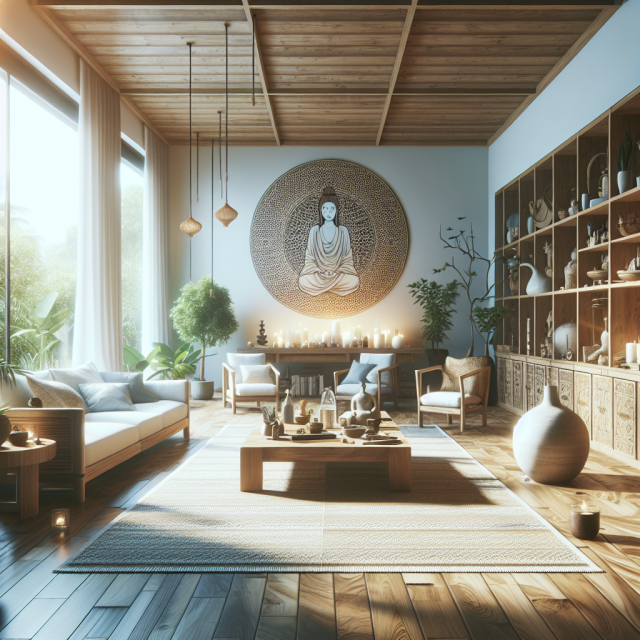
Create a Sanctuary: Steps to Design a Zen Living Room That Inspires Peace
In today’s fast-paced world, creating a serene space at home can be a refuge from stress and chaos. Your living room serves as the heart of your home, making it the perfect place to design a Zen sanctuary. A Zen living room is more than just aesthetics; it embodies tranquility, mindfulness, and balance. Here are actionable steps and essential tips to transform your living space into a serene retreat that inspires peace.
Step 1: Choose a Calming Color Palette
Begin your Zen living room design by selecting a calming color scheme. Soft neutrals such as beige, taupe, soft gray, and whites evoke a sense of tranquility. Accent colors inspired by nature—such as muted greens, soft blues, or gentle earth tones—can enhance the peaceful ambiance. Aim for a palette that resonates with you personally, as this emotional connection anchored in color will keep your living room uplifting.
Tip: Test samples on your walls and observe them at various times during the day to ensure they maintain their calming effect in different lighting conditions.
Step 2: Embrace Natural Light
Natural light plays a pivotal role in creating a serene environment. Maximize the amount of sunlight that enters your space by opting for sheer curtains or light-filtering blinds. If possible, decorate around windows rather than blocking them to connect the indoor space with the outdoors.
Tip: For rooms that lack natural light, consider using full-spectrum light bulbs that mimic natural sunlight, creating a warm atmosphere.
Step 3: Incorporate Natural Elements
Nature has an incredible ability to promote relaxation. Incorporate natural elements like plants, wooden furniture, and stone accents to connect the indoor environment to the outdoors. Houseplants not only enhance air quality but also bring in a visual connection to nature.
Tip: Use low-maintenance plants like snake plants, peace lilies, or succulents, which thrive indoors and require minimal care.
Step 4: Choose Simple, Functional Furnishings
In a Zen living room, simplicity and functionality are key. Opt for furniture with clean lines—think low sofas, minimalist coffee tables, and geometrically-shaped chairs. Ensure that your living space is free of clutter, as a tidy area contributes to a more peaceful mind. Choose multifunctional furnishings if space is limited, such as ottomans with storage capabilities and coffee tables that can be used for games or additional seating.
Tip: Arrange furniture to create smooth pathways that allow energy, or chi, to flow freely in the space.
Step 5: Create a Centerpiece of Calm
A focal point can anchor a Zen living room and create a sense of harmony. This could be a minimalist piece of art, an elegant vase of fresh flowers, or an illuminated water feature that provides both visual interest and calming sounds.
Tip: If incorporating a meditation corner, designate a peaceful space with cushions on the floor and a small altar with objects that evoke tranquility.
Step 6: Consider Textures and Fabrics
To create a soothing atmosphere, integrate various textures into your space. Soft fabrics such as cotton, linen, and silk add depth to your design while contributing to emotional comfort. Layering textures through cushions, throws, and rugs can create a welcoming environment.
Tip: Opt for natural fiber rugs like jute or wool, as they are durable and can withstand everyday wear.
Step 7: Minimize Visual Noise
Select decor thoughtfully—limit the number of decorative items to avoid visual clutter. Instead, focus on placing a few carefully chosen pieces that spark joy and resonate with your personal aesthetic.
Tip: Store away daily items that contribute to clutter, such as remote controls and magazines. Utilize hidden storage options like decorative baskets or minimalist cabinets.
FAQs
1. Where can I find accessories for my Zen living room?
You can find beautiful accessories at home goods retailers such as IKEA, Target, or online marketplaces like Etsy or Wayfair. Look for items like indoor plants, decorative vases, or minimalist art pieces.
2. What types of plants are best for a Zen atmosphere?
Plants like peace lilies, bamboo, and snake plants are ideal for a Zen living room due to their air-purifying qualities and visually calming appearances.
3. How can I enhance comfort in my Zen living room?
Incorporate soft seating options like floor cushions and plush throws to invite relaxation. Aromatherapy diffusers or candles can also create a soothing environment with calming scents.
Conclusion
Designing a Zen living room is all about creating an environment that nurtures peace and tranquility. By carefully selecting calming colors, embracing natural light, incorporating nature, and maintaining simplicity, your living room can become a true sanctuary. Embrace these steps, and enjoy a serene space that inspires you daily to find peace amidst the hustle and bustle of life.







